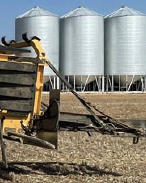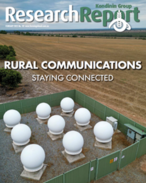This article is 5 years old. Images might not display.
A key factor in minimising the threat to livestock during a bush fire or on extreme fire danger days is to identify safer areas on-farm where livestock can be moved to.
Agriculture Victoria District Veterinary Officer, Dr Jeff Cave, said the area chosen will depend on the type of livestock and their expected behaviour during a fire.
Other aspects to consider include the terrain and accessibility of the area, as well as the likely behaviour of a fire.
"Having a livestock fire plan that has been carefully thought through and can be quickly executed will minimise the risk to livestock and people, especially if that plan has been practised prior to an actual fire event," Dr Cave said in Agriculture Victoria's weekly e-newsletter.
"On days of extreme fire danger, or on the day before, livestock should be moved into lower risk areas on-farm, or to a safer property.
"Low risk areas include paddocks with green summer crops or lucerne; bare paddocks with no dry feed; or a ploughed paddock. Low risk areas should not be next to areas of scrub or bushland and should be large enough to allow livestock to move around and away from a fire."
Dr Cave said all low risk areas should have sufficient drinking water to enable livestock to remain in the area for extended periods of high fire risk and high temperatures, be protected by firebreaks and be free of leaf, twigs and bark build-up.
Areas where there are dams and swamps are another option to consider. Stockyards have been known to successfully hold livestock during a fire if protected by a firebreak. If this is the preferred option, consider using a sprinkler system to minimise heat stress.
A crucial point is make sure gates remain closed that may allow livestock access to public roadways, as any animals will present a hazard to traffic in smoky conditions.
For further assistance on preparing a farm and livestock bushfire plan go to www.agriculture.vic.gov.au/agriculture/emergencies






















